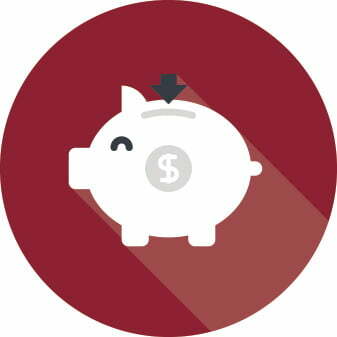From the Fall 2019 Journal of the Colorado Dental Association
Take the below quiz based on your practice statistics and see if any answers surprise you. No cheating!
|
Student Loan Debt If you are concerned about paying off your student loans, a good starting point is to list all your outstanding debts, with their monthly payments, interest rates and time remaining until that final payment. The information on your total monthly loan payment should be included in your household budget in the fixed expenses category. In general, you should try to keep your total debt payments in the range of 15%-20% of your net household income. The rule of thumb for paying off student loans—or any type of debt—is to pay as much as you can on the obligation that has the highest interest rate. That strategy reduces the total interest costs you will pay on your debt and can lower your debt payments dramatically as you pay off one loan after another. |
Questions:
- How can you determine how much working capital may be available when asking for a practice loan?
- How much are you spending in dental supply purchases? The average practice should spend 6%-8% of collections (not production) on supplies. This percentage assumes that practice collections are at 98% or more.
- How do you determine if you have financial security for the future year?
- How do you determine how quickly your practice is able to collect on services provided? (How do you determine Accounts Receivable Turnover?)
- How long will it take your money to double in value (assuming in stays in your account)? (Rule of 72)
- How much money can you withdraw during retirement, without depleting your principal? (4% Rule)
- When purchasing the accounts receivable, how can you determine how much extra cash you will need for a practice loan?
- When determining if an active patient count (within 24 months) is accurate for a general dentistry practice, it can be estimated that there are 200 patients per $100,000 of income.
- What is the percentage of recare patients in your hygiene department in a 6-month period (Recare Effectiveness Rate)? (And how effective are you at keeping patients in your hygiene department?)
|
Saving for the Future When it comes to saving for the future, get into the habit of paying yourself first, before paying your bills. Then, put that money into some type of savings vehicle where it will grow slowly but steadily—thanks to the power of compounding interest. Those same principles can help you achieve financial stability at the start of your dental career and keep you moving toward your longer-term personal goals. In fact, it’s a good idea to put at least 5%-10% of every “paycheck” into some type of savings account through a direct deposit process, so you don’t even have to think about transferring funds. |
Answers:
- Practice Price x Average Lender Percentage of Additional Funds Allowance = Working Capital
(i.e. if practice price is $560,000 and percentage is 15%, then $560,000 x .15 = $84,000) -
Income x 98% = Collections. Collections x 6% OR 8% = Reasonable Amount Spent on Supplies
(i.e. if practice income is $560,000, then $560,000 x .98 = $548,800. $548,800 x .08 = $43,904) -
Current Assets (short-term cash, liquid) / Current Liability (money owed within the year) = 1 or greater demonstrates financial security for the following year.
(i.e. if current assets are $150,000 and current liabilities are $125,000, then $150,000 / $125,000 = 1.2 so there are sufficient assets to cover the annual liabilities with a little left over) -
(Charges for Services Less Write Offs) / (Amount of Accounts Receivable at Start of Period + Amount of Accounts Receivable at End of Period / 2) = Accounts Receivable Turnover
A high turnover rate (5-10) = efficient collections
A low turnover rate (0-4) = inefficient collections
(i.e. if charges for services are $800,000 and write offs are $100,000; and A/R start amount is $100,000 and A/R end amount is $150,000, then ($800,000 – $100,000) / ($100,000 + $150,000 / 2) = 5.6 -
72 / Current Interest Rate = # of Years for Money to Double in Value
(i.e. if your portfolio earns 8% interest, then 72 / 8 = 9 years) -
Retirement Savings x 4% = Suggested Annual Maximum Withdrawal Amount.
(i.e. if retirement savings is $1M then $1,000,000 x .04 = $40,000) -
Purchase Price / 12 months in a year = Average Monthly Income. Average Monthly Income x Average Rate of Collection of Accounts Receivable = Additional Amount of Practice Loan
(i.e. if the practice income (collections) is $800,000 and the accounts receivable is 1 to 1.5 times monthly income, then $800,000 / 12 = $67,000 (rounded) x 1 = $67,000 OR $800,000 / 12 = $67,000 x 1.5 = $100,500) -
Practice Income / $100,000 = A. A x 200 = Active Patients
(i.e. if practice income is $800,000, then $800,000 / $100,000 = 8. 8 x 200 = 1,600 active patients) -
Number of Periodic Oral Exams (D0120) in a 6-month Period / Active Patients in Your Practice in the Last 18 Months. This assumes the dentist does exams twice per year.
A healthy percentage is 60%-80%. The national average is 35%.
(i.e. if periodic oral exams are 450 and active patients are 1,000, then 450 / 1,000 = 45%)
Formulas and equations were supplied by SAS Transitions Dental Practice Brokers, The Dentists Supply Company (TDSC), Fortune Management of Colorado and CDA Retirement Solution.


